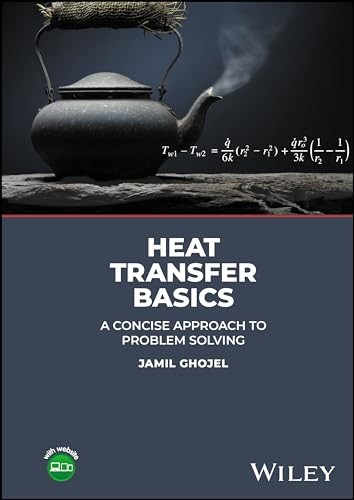

Most ebook files are in PDF format, so you can easily read them using various software such as Foxit Reader or directly on the Google Chrome browser.
Some ebook files are released by publishers in other formats such as .awz, .mobi, .epub, .fb2, etc. You may need to install specific software to read these formats on mobile/PC, such as Calibre.
Please read the tutorial at this link: https://ebookbell.com/faq
We offer FREE conversion to the popular formats you request; however, this may take some time. Therefore, right after payment, please email us, and we will try to provide the service as quickly as possible.
For some exceptional file formats or broken links (if any), please refrain from opening any disputes. Instead, email us first, and we will try to assist within a maximum of 6 hours.
EbookBell Team

4.0
56 reviewsHeat Transfer Basics covers the essential topics of heat transfer in a focused manner, starting with an introduction to heat transfer that explains its relationship to thermodynamics and fluid mechanics and continuing on to key topics such as free convection, boiling and condensation, radiation, heat exchangers, and more, for an accessible and reader-friendly yet comprehensive treatment of the subject.
Each chapter features multiple worked out example problems, including derivations of key governing equations and comparisons of worked solutions with computer modeled results, which helps students become familiar with the types of problems they will encounter in the field. Throughout the book, figures and diagrams liberally illustrate the concepts discussed, and practice problems allow students to test their understanding of the content. The text is accompanied by an online instructor’s manual.
Heat Transfer Basics includes information on
One-dimensional, steady-state conduction, covering the plane wall, the composite wall, solid and hollow cylinders and sphere, conduction with and without internal energy generation, and conduction with constant and temperature-dependent thermal conductivity
Heat transfer from extended surfaces, fins of uniform and variable cross-sectional area, fin performance, and overall fin efficiency
Transient conduction, covering general lumped capacitance solution method, one- and multi-dimensional transient conduction, and the finite-difference method for solving transient problems
Free and forced convection, covering hydrodynamic and thermal considerations, the energy balance, and thermal analysis and convection correlations
More advanced than introductory textbooks yet not as overwhelming as textbooks targeted at specialists, Heat Transfer Basics is ideal for students in introductory and advanced heat
…